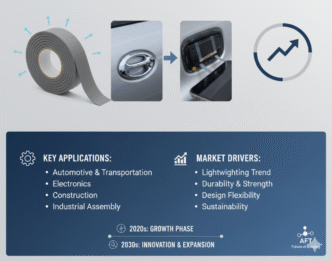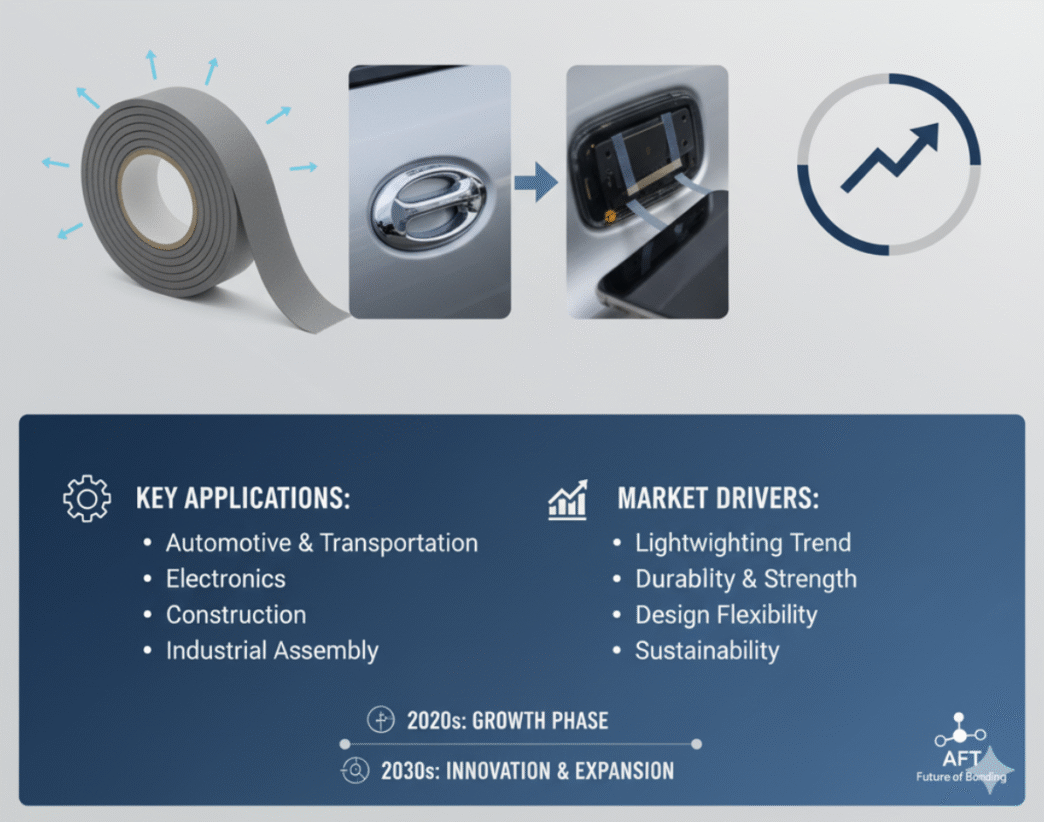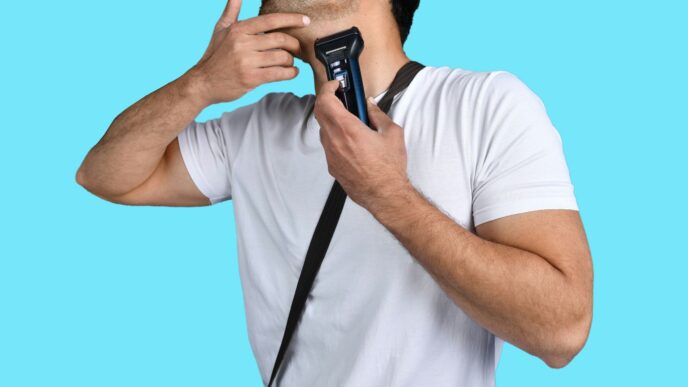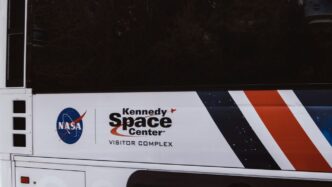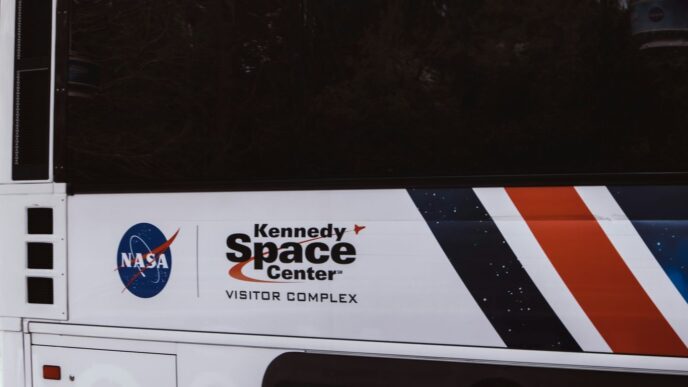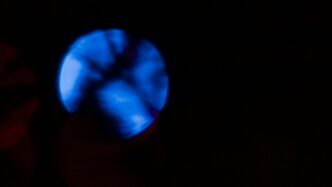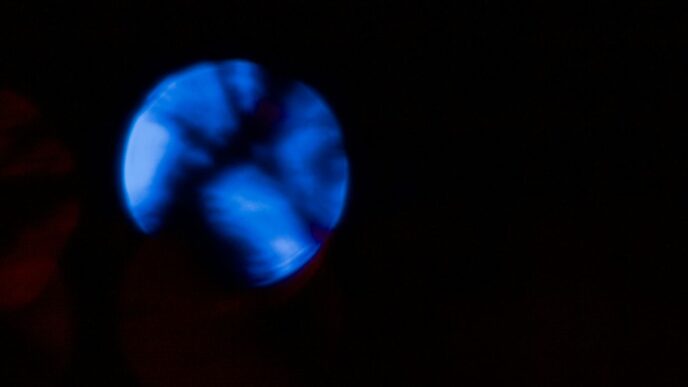The Acrylic Foam Tape Market refers to pressure-sensitive adhesive tapes that use acrylic-based foam carriers to deliver high-bond strength, shock absorption, gap filling, and weather resistance across a wide range of substrates. Widely used as an alternative to mechanical fasteners and liquid adhesives, acrylic foam tapes are valued for their clean installation, vibration damping, and durability in harsh environments. Common uses include exterior and interior automotive bonding, structural glazing in construction, component mounting in consumer electronics, and assembly in home appliances.
Market snapshot & growth outlook
The global Acrylic Foam Tape Market was valued at USD 2.5 billion in 2024 and is projected to grow at a CAGR of 7.9% to reach USD 4.8 billion by 2034. Growth is supported by accelerating demand from automotive lightweighting and electrification initiatives, rising adoption in building & construction for façade and glazing applications, and expanding use in compact electronics where thin-profile bonding is essential.
Segmentation (concise)
- By Type: Single Sided Tape, Double Sided Tape, Self-Stick Tape.
- By Application: Automotive, Building & Construction, Home Appliances, Electronics.
- By Region: North America, Europe, Asia Pacific, Latin America, Middle East & Africa.
Key market drivers
- Automotive lightweighting & EV adoption: As OEMs shift to lighter materials (aluminum, composites) and EV platforms, acrylic foam tapes provide structural bonding and NVH (noise, vibration, harshness) control while enabling reduced use of mechanical fasteners.
- Growth in construction & façade systems: Structural glazing, curtain walls, and cladding systems favor high-performance tapes for aesthetics and thermal movement accommodation.
- Miniaturization of electronics: Thin, high-strength tapes are critical for bonding displays, modules, and heat-dissipation components in smartphones, tablets, and wearables.
- Manufacturing efficiency & automation: Tape-based bonding simplifies assembly lines, reduces curing times versus liquid adhesives, and supports high-throughput manufacturing.
- Performance innovation: Advances in acrylic chemistries deliver improved temperature resistance, UV stability, and substrate compatibility (low-surface-energy plastics), expanding end-use suitability.
Competitive landscape — major players
Leading companies shaping the market include:
- 3M Company
- Nitto Denko Corporation
- Beiersdorf AG
- Intertape Polymer Group, Inc.
- Avery Dennison Corporation
- Scapa Group Plc
- Compagnie de Saint-Gobain S.A.
- Teraoka Seiko Company Ltd.
- Achem Technology (Shanghai) Co., Ltd
- Adhesive Application, Inc.
These players compete through product innovation (higher-temperature tapes, flame-retardant grades, low-VOC formulations), capacity expansions, cross-industry partnerships, and tailored solutions for OEMs’ specific bonding challenges.
Download Your Free Sample Copy of Report: https://www.prophecymarketinsights.com/market_insight/Insight/request-sample/1267
Regional dynamics
- Asia Pacific leads demand driven by large automotive and electronics manufacturing hubs (China, South Korea, Japan, India). Rapid urbanization and construction activity also boost consumption.
- North America & Europe see steady growth from automotive lightweighting, green building retrofits, and premium appliance markets.
- Latin America & MEA are emerging markets with growth tied to infrastructure projects and expanding manufacturing capability.
Trends shaping the market
- Shift to double-sided structural tapes: OEMs prefer double-sided tapes for bonding exterior trim, emblems, and solar roofs—applications that demand high peel and shear strength.
- Sustainability push: Increasing regulatory and customer pressure is driving development of recyclable, low-VOC, and solvent-free tape systems.
- Customization & system solutions: Suppliers increasingly offer full-system solutions — tapes matched with primers, surface treatments, and application equipment — to ensure reliable long-term bonds.
- Integration with automation & digital quality control: Automated tape dispensing, inline inspection, and sensor-enabled application enhance repeatability in high-volume production.
- Raw material volatility & supply-chain diversification: Fluctuating prices for acrylic monomers and foam carriers encourage vertical integration and strategic sourcing.
Challenges & restraints
- High-performance competition: Liquid adhesives, mechanical fastening, and hybrid joining techniques still compete when extreme structural loads or disassembly are required.
- Surface preparation sensitivity: Inadequate substrate cleaning or incompatible finishes can reduce bond reliability, requiring training and process controls.
- End-of-life considerations: Tape-bonded assemblies present challenges for disassembly and recycling; innovation is needed to reconcile durability with circularity.
Strategic insights for stakeholders
- Manufacturers & R&D teams: Invest in next-gen acrylic chemistries that combine high-temperature tolerance, flame retardance, and compatibility with low-energy plastics. Offer modular “tape + primer” kits for critical OEM applications.
- OEMs (Automotive, Electronics, Appliances): Leverage tape bonding to simplify assembly, reduce mass, and improve aesthetics — but prioritize supplier qualification, surface prep standards, and recyclability planning.
- Investors & private equity: Look for specialized manufacturers with differentiated formulations or strong IP, plus firms offering integrated supply-chain solutions.
- Distributors & converters: Expand technical services (application training, testing labs) to help customers adopt tapes for demanding applications.
Recent developments (industry direction)
Market activity has centered on product launches for high-temperature and flame-retardant tapes, strategic partnerships between tape suppliers and automotive OEMs for EV programs, and capacity investments in APAC to meet local demand. Suppliers are also increasing focus on sustainability, offering lower-emission manufacturing and trials of recyclable carrier technologies.
FAQs
Q: What was the market size in 2024?
A: USD 2.5 billion.
Q: What is the forecast to 2034?
A: Market projected to reach USD 4.8 billion by 2034 at a CAGR of 7.9%.
Q: Which application generates highest demand?
A: Automotive and electronics are key demand engines, with construction also playing a major role in certain regions.
Author & About Us
Author: Shweta R., Business Development Specialist at Prophecy Market Insights
About Prophecy Market Insights: Prophecy Market Insights is a global market research and consulting firm that delivers strategic market intelligence, in-depth industry analysis, and actionable insights. Our reports (900+ words and full-length profiles) help businesses, investors, and policymakers make informed decisions by combining data-driven forecasting, segmentation, competitive mapping, and trend analysis.

